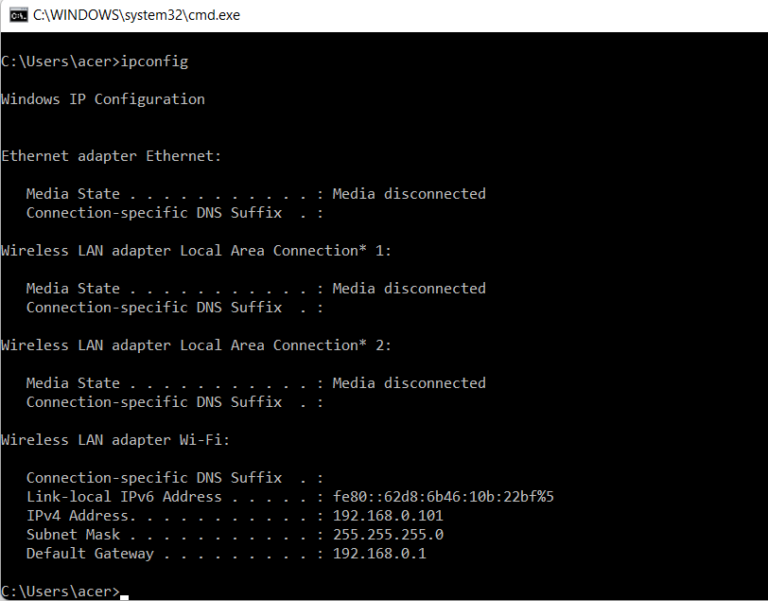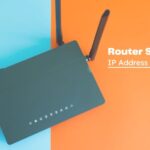
The IP address 192.168.188.1 is widely used as the default gateway for several routers. The default gateway is the IP address used by network devices to connect to the internet.
To view and adjust the router’s settings, you must log in via a web browser with the IP address 192.168.188.1. This is referred to as router login.
After logging in, you can alter the router’s configuration settings, including network name (SSID), password, port forwarding, and DHCP settings, among others. However, it is crucial to note that making wrong changes to these settings might possibly impair the performance and security of your network, so be sure to make only the necessary changes and keep your router’s software up to date.
Also Read – MSRM Extender Setup
Follow these steps to log in and configure your router with the IP address 192.168.188.1:
- Step 1. Attach your router to your PC with an Ethernet connection in
- Step 2: Open a web browser and enter http://192.168.188.1 into the address box.
- Step 3: You will be required to provide the username and password for your router. If they have not been changed, the default username and password are “admin“
After logging in, you should be able to see your router’s settings and make any necessary adjustments. The precise instructions depend on the model and brand of your router.
The following are examples of common settings you may want to configure:
- Name of the wireless network (SSID) and password
- DHCP configurations
- The forwarding of ports
- Firewall settings
- Software upgrades
It is crucial to know that modifying your router’s settings may impair the performance and security of your network. Ensure that only essential updates are made and that your router’s firmware is kept up-to-date to maintain optimal performance and security.
Explain the meaning of IP numbers like 192.168.188.1.
IP addresses, like 192.168.188.1, are labels given to devices on a network that identify them by their location on the network and their function. Using this tag, the gadget may be located and communicated with on the network.
Each group of four digits in the IP address, separated by periods, can be any value between 0 and 255. The first three sets of numbers in an IP address, in this example 192.168.188.1, designate the network, and the last set of numbers, 1, designate the device within the network.
IP addresses are utilized for sending and receiving data over a network and are thus crucial to this process. An IP address can be either dynamic (issued by a DHCP server) or static (provided by the user) for a given device.
How To Find Router IP Address?
To find your router’s IP address, you can follow these steps:
Option 1: Using Command Prompt (Windows)

- Step 1: Open Command Prompt by typing “cmd” in the search bar or pressing the Windows key + R and typing “cmd” in the Run dialog box.
- Step 2: Type “ipconfig” in the Command Prompt and press Enter.
- Step 3: Look for the “Default Gateway” section, and the IP address listed here 192.168.188.1 is your router’s IP address.
Option 2: Using Network Preferences (Mac)
- Step 1: Click on the Apple icon in the upper-left corner of the screen and select “System Preferences.”
- Step 2: Click on the “Network” icon.
- Step 3: Select your active network connection (Wi-Fi or Ethernet).
- Step 4: Click on the “Advanced” button in the lower-right corner.
- Step 5: Click on the “TCP/IP” tab, and the IP address listed under “Router” is your router’s IP address.
Option 3: Using Router Manual
You can also find your router’s IP address in the router manual or on the manufacturer’s website. Look for the section on accessing the router’s settings, and it should provide the IP address.
Once you have found your router’s IP address, you can enter it into a web browser to access the router’s settings and configure it as needed.
How can I change my IP Address?
You can change your IP address in numerous ways:
Option 1: Connect to Your Network Again
Disconnecting and reconnecting from your network is one of the simplest ways to alter your IP address. As a result, your router will issue you a new IP address.
Option 2: Renew and Release Your IP Address
- Step 1: In Windows, open Command Prompt, and in Mac, launch Terminal.
- Step 2: Enter “ipconfig /release” on Windows or “sudo ipconfig set en0 DHCP” on Mac.
- Step 3: After a few seconds, hit Enter and run “ipconfig /renew” on Windows or “sudo ipconfig set en0 DHCP” on Mac.
- Step 4: You should now have an updated IP address.
Option 3: Modify Your Network Configuration
- Step 1: Go to your Network Settings.
- Step 2: Choose the network to which you are currently connected.
- Step 3: In the lower-right corner, click the “Advanced” button.
- Step 4: Choose the “TCP/IP” tab.
- Step 5: Enter the desired IP address, subnet mask, and router address.
- Step 6: Save the modifications.
Option 4: Make use of a VPN.
Another method for changing your IP address is to use a Virtual Private Network (VPN). A VPN will redirect your internet traffic to a different server and assign you a new IP address.
Changes to your IP address may have an impact on your internet connectivity or ability to access certain services, so proceed with caution and ensure you understand the potential repercussions before making any changes.

